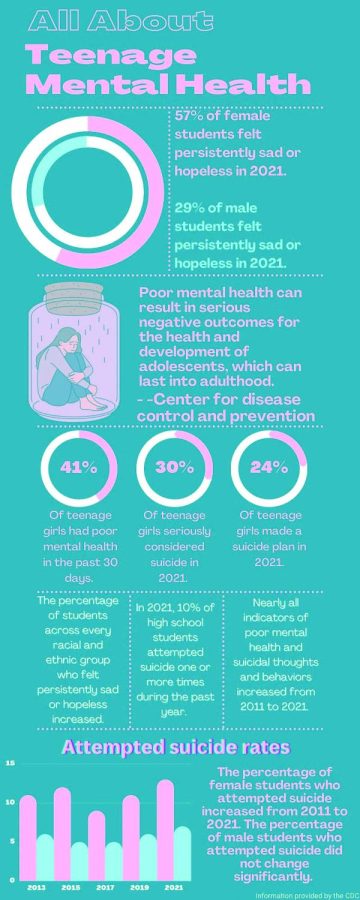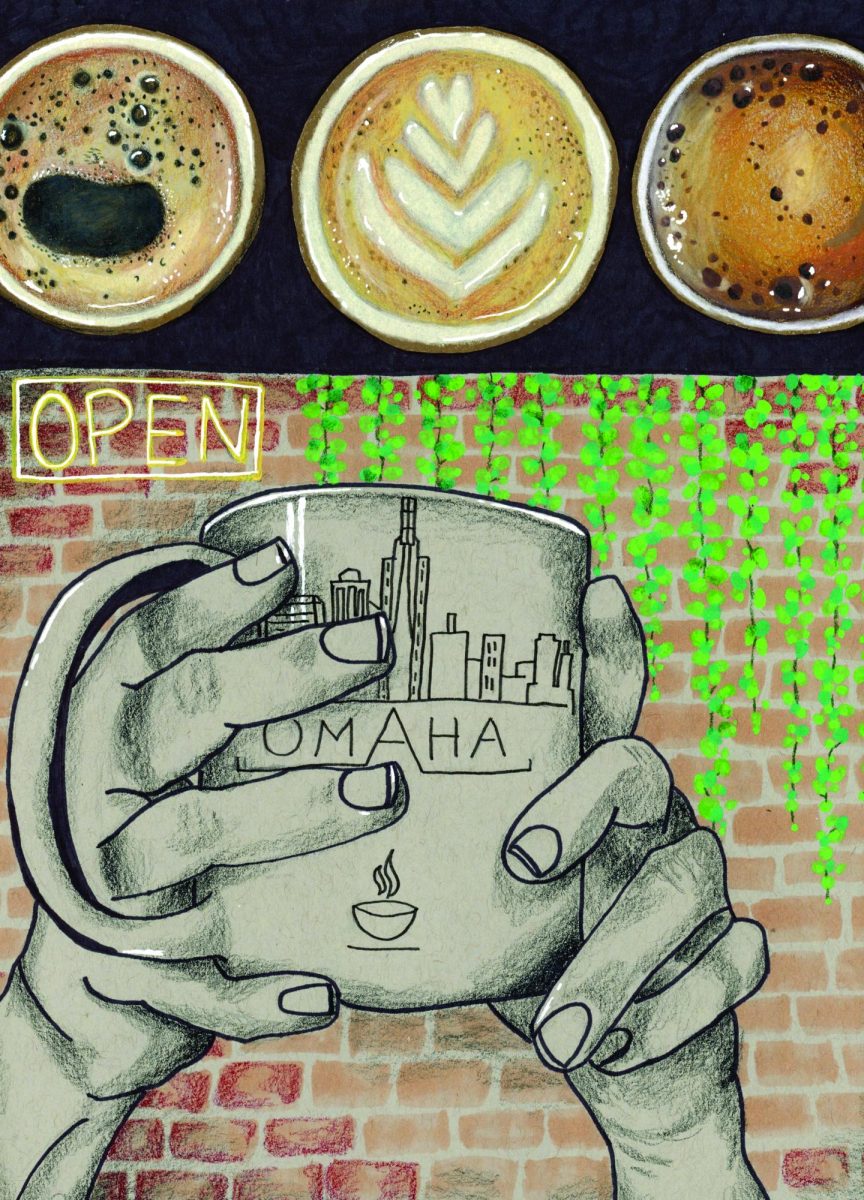
The mental health of teenagers has always been a worry of adults, but has recently become an even more concerning topic. The Center for Disease Control and Prevention recently released the Youth Risk Behavior Survey Data, an 89-page report on the trends of youth behavior. The results have been concerning and have shown that a mental health crisis has emerged among teenagers.
The CDC tracked substance abuse, violence, sexual behavior, and mental health from 2011 to 2021. Almost every trend was in the wrong direction, but mental health was considered most concerning. The CDC defines mental health as “emotional, psychological, and social well-being,” and says that it affects “how we think, feel, and act” while also determining how we handle our emotions and stress.
In regards to teenagers’ mental health, things seem to be rapidly going downhill.
The survey shows that 42 percent of teenagers had “persistent feelings of sadness or hopelessness in 2021,” around 14 percent more than in 2011. Far more concerning is the suicide attempt rate. In 2021, 10 percent of teenagers attempted suicide, while 3 percent of teenagers were injured in a suicide attempt. Out of the teenagers who attempted suicide, girls were almost twice as likely to as boys. Boys’ suicide attempt rate has stayed mostly stagnant since 2011, while girls’ has increased by 3 percent.
Some students at Millard South have noticed similar trends. Junior Cherry Bear says that “Compared to the last [couple] years, it feels like everyone is giving up on school and things that are important [to them].“ Counselors, too, are noting the trend.

“[We’re seeing] students with more mental health issues, absolutely. The counseling office is one thousand percent worried about that,” counselor Lisa Olsen said. “We feel like we’re spending more time counseling students, which of course takes away from other things. But students’ mental health needs are of course our top priority right now, but that reduces the amount of time we have for college planning or career planning or even meeting with students about grades, which is tough for us,” she said.
Classroom teachers are also seeing and hearing about students’ mental health struggles.
“You can just tell that [students have] more challenging issues that they’re struggling with, or a higher percentage of students have very serious challenges that they’re facing,” German teacher Tim Seeger said. “Some will share bits and pieces and you’ll overhear it,” he said.
What the CDC study does not indicate is what has caused the upward trend of reporting mental health struggles.
“I think the pandemic certainly has a piece in it, but I don’t think that it’s entirely because of the pandemic,” Olsen said.
“Because prior to the pandemic, we were certainly seeing students with mental health problems. It’s worse with freshmen, [and] I think a part of it is their middle school experience. It was very interrupted with the pandemic and them being out of school…. some of the social emotional skills that would naturally be worked on and developed in those middle school years were interrupted,” she said.
“The pandemic was more of a catalyst than anything,” junior Cosmos Peterick said. “I was still sad before then, but I felt way worse after.”
Some also attribute the crisis to social media.
“I partially think that social media has something to do with it,” junior Marrissa Gergan said. “A five year old told me he thought he was depressed just because the people he sees on social media were depressed,” she said.
Counterwise, junior Neko Manna said he thinks that there may be another reason for the increasing depression rate. “It’s probably because no one wanted to admit it [in the past] because they couldn’t get help- Now there’s all sorts of help and a lot more people can talk about it and not feel ridiculed.”
Ironically, the mental health crisis seems to be causing even more stress for some teens.
“I’ve been getting increasingly more concerned, and I’ve been getting increasingly more worried about society in general,” Bear
said. “I would say it’s really concerning to me,” junior Kylie Scott said. “That’s nothing I want my brother to go through- nothing I want for younger generations. Everything feels hopeless, and it’s nothing we can stop, but I wish I could shield people from it, “she said.
People have different ideas on how to help, too. Olsen said she thinks the solution is more counselors.
“In my ideal world, we would hire more counselors and social workers and we would lower class sizes to help teachers build relationships,” Olsen said.
Students also see value in adding more counselors.
“I think it would be nice to have counselors that are dedicated specifically to therapy and not other student stuff,” Scott said.
Senior Alex Daughtridge has an entirely different perspective on how mental health challenges teenagers.
“You’re never taught that your brain works differently from others,” he said.
“You never understand that you’re not the baseline, so you don’t notice the thought hoops you get caught in. It’s a big issue. I first noticed I was really sad in sixth grade, but I didn’t know that being sad was something wrong with my brain. I thought it was something wrong with my life,” he said.
For many teens, Daughtridge said, “Being alive is just hard right now.”








Tami Lancaster • Oct 6, 2023 at 1:37 pm
I read the comments from Alex.
My son his a good friend of his. We recently heard that he passed. 🙁